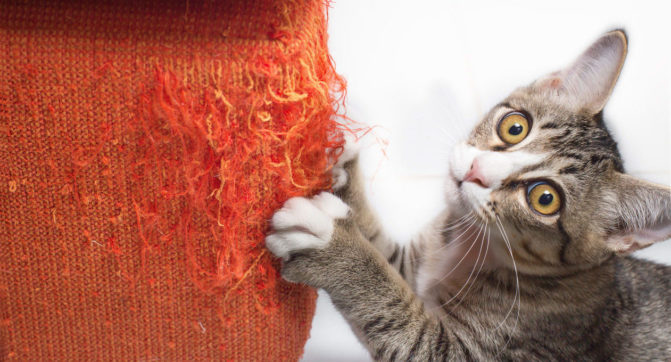Onychectomy, commonly referred to as cat declawing, involves surgically removing a cat’s claws by amputating the distal phalanges, which are the end parts of their toes. While this procedure may be considered in certain circumstances, it is essential to make an informed decision and consult with your family veterinarian before proceeding with declawing.
Should You Declaw Your Cat?
Declawing is generally not necessary and should only be considered after all other options have been exhausted. Scratching is a natural behavior for cats, and providing them with appropriate outlets for scratching, such as scratching posts and surfaces, is crucial. However, there are instances where declawing might be necessary, such as if scratching behavior poses a significant health risk to the owner, particularly individuals with certain medical conditions or compromised immune systems.
Encouraging Appropriate Scratching Behavior
Scratching is an inherent behavior in cats, and it is not possible to completely eliminate it. However, you can redirect their scratching behavior to appropriate areas. Here are some tips:
- Provide scratching posts and surfaces that cats enjoy.
- Determine which substrates your cat prefers to scratch and provide those options.
- Regularly trim your cat’s claws to keep them at a safe length. Start this routine when they are kittens to help them get used to nail trims.
- Consider using nail caps made of rubber or plastic, which can be applied every 4-6 weeks.
 |  |
|---|---|
| Amazon best selling cat scratching posts | Amazon best selling soft nail caps for cats |
When Destructive Scratching Persists
If you have exhausted all efforts to deter destructive scratching and your cat continues to cause damage, declawing may be considered. It is important to remember that cats with destructive scratching tendencies are more likely to be relinquished, contributing to the issue of homeless cats in shelters. If declawing ensures that your cat will remain in a loving home, it becomes a viable option.
Important Considerations Before Declawing
Before deciding to declaw your cat, there are vital factors to keep in mind:
- Never let a declawed cat go outside alone, as they will be defenseless without their claws.
- Declawing is a major surgery with inherent risks and possible complications, including bleeding, infection, pain, and delayed healing. In rare cases, permanent tenderness may occur.
- It is advisable to opt for declawing when your cat is young and lightweight, as older and overweight cats may experience a higher complication rate.
Is Declawing Painful?
At Pawsoha, we prioritize the well-being of your cat during the declaw surgery. Our experienced veterinarians use safe and effective anesthesia and take a multi-modal approach to control pain before, during, and after the procedure. To ensure proper healing and minimize discomfort, we provide specialized care and keep your cat hospitalized at Pawsoha for three days. Our goal is to make the declawing process as pain-free as possible.
See our full price guide: Dog Pricing | Cat Pricing
Frequently Asked Questions
Q: How do I decide if I should declaw my cat or not?
A: Declawing should only be considered as a last resort. Consult with your family veterinarian to explore alternative options and address any concerns you may have.
Q: Is declawing a permanent solution?
A: Yes, declawing is a permanent procedure. Once a cat’s claws are removed, they will not grow back. It is crucial to make an informed decision before proceeding.
Q: Are there alternatives to declawing?
A: Yes, several alternatives can help redirect your cat’s scratching behavior, such as providing appropriate scratching surfaces, regular nail trims, and the use of nail caps.
Q: How long does it take for a cat to recover from declawing?
A: The recovery time varies, but most cats require a few weeks to heal fully. Our veterinarians will provide you with instructions on post-operative care to ensure a smooth recovery process.
Conclusion
Declawing should be approached with caution and considered only as a last resort when all other options have been exhausted. It is crucial to consult with your veterinarian and explore alternatives to ensure the well-being of your cat. At Pawsoha, we prioritize your pet’s comfort and safety, providing expert care during the declawing process. If declawing becomes necessary, our team will guide you through the procedure and post-operative care to ensure a pain-free and successful recovery.